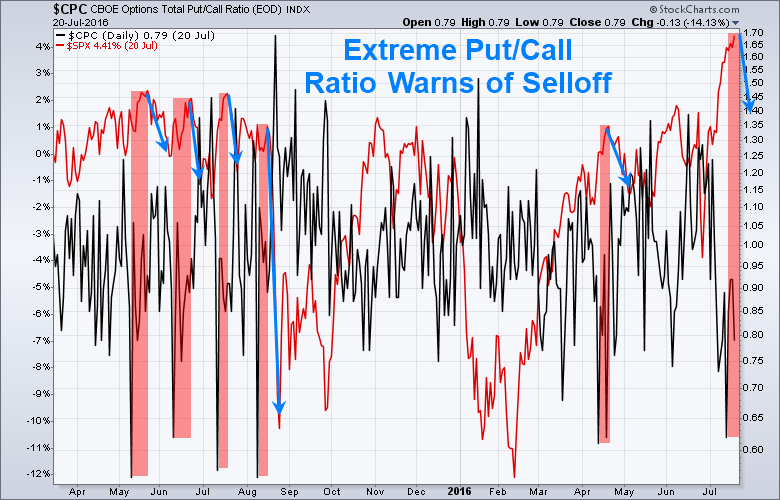purchasing power parity Definition, Theory, Example, & Meaning Definition

APPP implies that exchange rates should be fixed or constant based on the ratio of absolute price levels between two countries. RPPP expands on the idea of purchasing power parity and complements the theory of absolute purchasing power parity (APPP). The APPP concept declares that the exchange rate between the two nations will be equal to the ratio of the price levels for those two countries, and APPP is discussed later in this article. https://1investing.in/ is when the ratio of the changes in the price level in two different countries is proportional to the change in the equilibrium exchange rate. According to relative purchasing power parity, when there are differences in the price levels between two countries, these differences will cause the exchange rate between two countries to change.
- Purchasing power parity is critical for developing relatively reliable economic data that can be used to evaluate the market situations of various nations across borders.
- That means that fluctuations due to factors such as inflation will bring the actual exchange rate out of PPP alignment.
- Companies don’t always pay the same taxes, which means that the price of goods will not be the same in other countries, hence providing a drawback for the PPP theory.
- Purchasing power parity (PPP), a measure of the relative value of currencies that compares the prices of purchasing a fixed basket of goods and services in different countries.
- Conversely, category 2 products tend to trade close to the currency exchange rate.
This means that for you to be able to buy the same Big Mac in the UK and the US with the same purchasing power, the exchange rate would have to be 0.59. Now, by comparing the actual exchange rate, which is 0.79, with the PPP exchange rate, we see that actual exchange rate is above the PPP. Specifically, $1 can be exchanged for 33% more British pounds than would be the case under parity. You can think of it as the nominal exchange rate that allows someone to acquire the same amount of goods and services in the two different counties with exactly the same amount of purchasing power.
It is based on the law of one price, which says that, if there are no transaction costs nor trade barriers for a particular good, then the price for that good should be the same at every location.[1] Ideally, a computer in New York and in Hong Kong should have the same price. If its price is 500 US dollars in New York and the same computer costs 2,000 HK dollars in Hong Kong, PPP theory says the exchange rate should be 4 HK dollars for every 1 US dollar. Which implies that the value of A$ relative to B$ should depreciate (nominally) by (approximately) the same amount that the inflation in country A exceeds inflation in country B.
Types of Purchasing Power Parity
Since labor in China is less expensive, it costs less to produce one Big Mac than it does in the United States. The PPP-based poverty lines are also used to monitor progress towards universal health coverage. The number of people pushed below the current $1.90 and $3.20 poverty lines by ‘out-of-pocket’ health care expenditures show the number of people living in households experiencing impoverishing levels of health expenses. Without such expenditures people living in these households would have lived above these poverty lines. In the 2005 ICP round, regions were compared by using a list of some 1,000 identical items for which a price could be found for 18 countries, selected so that at least two countries would be in each region. PPP is an important metric because it provides a way to compare levels of growth and standards of living in various nations, each of which has its own currency.
The difference between this and the actual exchange rate of 7.83 suggests that the Hong Kong dollar is 54.2% undervalued. That is, it is cheaper to convert US dollars into Hong Kong dollars and buy a Big Mac in Hong Kong than it is to buy a Big Mac directly in US dollars. Various ways of averaging bilateral PPPs can provide a more stable multilateral comparison, but at the cost of distorting bilateral ones. These are all general issues of indexing; as with other price indices there is no way to reduce complexity to a single number that is equally satisfying for all purposes.
ECONOMIST: Big Mac cost attack San Marcos Record – San Marcos Daily Record
ECONOMIST: Big Mac cost attack San Marcos Record.
Posted: Thu, 24 Aug 2023 07:00:00 GMT [source]
As we can see, price level differences between developed and developing countries are much larger than those between Spain and England. The amount of goods and services that you can buy with 500 US ponzi meaning dollars in the US is very different to what you can buy with 500 US dollars in rural India. The concept originated in the 16th century and was developed by Swedish economist Gustav Cassel in 1918.
To be specific, the figures below correspond to the price level ratio of PPP conversion factors to market exchange rates. Hence, numbers below 1 imply that if you exchange 1 dollar at the corresponding market exchange rate, the resulting amount of money in local currency will buy you more in that country than you could have bought with one dollar in the US in the same year. PPPs should not be used, however, for the strict ranking of economies, for national growth rates, to compare output and productivity by industry, as equilibrium exchange rates, nor as an indicator of the under- or overevaluation of currencies.
Constructing Purchasing Power Parity
This is significant because currencies that are over or undervalued in terms of purchasing power parity (PPP) are likely to adjust over time, resulting in serious economic consequences as well as long-term swings in the currency’s value. And second, differences in consumption and production patterns make the identification of a common ‘standard’ basket of goods difficult and arbitrary. Agreeing on broad categories (e.g. ‘food’) is relatively easy; but narrowing down the exact items is much more complicated, since allowances have to be made for differences in factors such as product quality. Hence, the actual items that should be included in the ‘standard basket’ of goods produced and consumed in, say Sweden, are very different to those that should be included in Saudi Arabia.
Any exchange rate above or below this suggests that one of the currencies is overvalued or undervalued. This creates an opportunity for people to shift purchases from one country to another, where they can acquire the same goods for less money, because the exchange rate gives them more purchasing power. Purchasing power parity is the exchange rate that would make the purchasing power in one country equal to that of another country with a different currency. Relative Purchasing Power Parity (RPPP) refers to the expansion of the purchasing power parity (PPP) theory to involve inflation changes as time goes by. The amount of goods and services that one power of money can purchase is referred to as purchasing power.
- People in different countries typically consume different baskets of goods.
- The exchange rate reflects transaction values for traded goods between countries in contrast to non-traded goods, that is, goods produced for home-country use.
- PPP-converted measures are used to establish the World Bank global poverty lines, which identify the levels of daily income or consumption under which people struggle to provide for their basic subsistence needs.
- This creates an opportunity for people to shift purchases from one country to another, where they can acquire the same goods for less money, because the exchange rate gives them more purchasing power.
- PPP-based conversions differ from currency conversions that use market exchange rates because the latter do not distinguish between the relative price levels of economies for traded goods, such as merchandise, and non-traded goods, such as certain services.
Each month, the Organisation for Economic Co-operation and Development (OECD) measures the differences in price levels between its member countries by calculating the ratios of PPPs for private final consumption expenditure to exchange rates. The OECD table below indicates the number of US dollars needed in each of the countries listed to buy the same representative basket of consumer goods and services that would cost US$100 in the United States. By contrast to absolute parity, relative parity includes everything stated in absolute parity, but considers inflation. It is an economic theory that states exchange rates and price levels will equal each other over the long-term.
Drawbacks of Purchasing Power Parity
RPPP suggests that countries with higher rates of inflation will have a devalued currency. What PPP does is eliminate the market influences and directly compares the true price of goods and services between nations. So if we look back on this example, both countries produce the same number of goods, so there would be Purchasing Power Parity – instead of an exchange rate of 2.5.
Why isn’t Canada an economic giant? – Financial Times
Why isn’t Canada an economic giant?.
Posted: Sun, 03 Sep 2023 07:00:00 GMT [source]
It is necessary to compare the cost of baskets of goods and services using a price index. This is a difficult task because purchasing patterns and even the goods available to purchase differ across countries. According to this concept, two currencies are in equilibrium—their currencies are at par—when a basket of goods is priced the same in both countries, taking into account the exchange rates. These are more widely traded and therefore affect the countries exchange rate. At the same time, these types of goods are more likely to vary in price between nations. For instance, it is far cheaper to ship something from Mexico to the US, than it is to ship from Mexico to India.
The purchasing power parity theory indicates that the exchange rate of two countries’ currencies is equal to the proportion of the countries’ price level. According to relative purchasing power parity, it is the ratio of changes in prices, rather than the ratio of price levels, that determines the exchange rate between two countries’ currencies. According to relative purchasing power parity, the 4 percent difference between these two countries will cause a 4 percent change in the exchange rate. In such a case, the British Pound will devalue by four percent to account for the difference in the price level between the US and the UK.
FAQs on Purchasing Power Parity (PPP)
For two countries – A and B – the two different currencies allow for different comparisons. The market exchange rate tells you how many units of currency from country B you can buy with a unit of currency A. The law of one price is weakened by transport costs and governmental trade restrictions, which make it expensive to move goods between markets located in different countries. Transport costs sever the link between exchange rates and the prices of goods implied by the law of one price. As transport costs increase, the larger the range of exchange rate fluctuations. The same is true for official trade restrictions because the customs fees affect importers’ profits in the same way as shipping fees.

Purchasing Power Parity (PPP) calculates the exchange rate by which both countries would see ‘parity’. In other words, the Purchasing Power Parity (PPP) exchange rate would be 1.6 as that is the ratio between a Big Mac in the UK at £5 and the US at $8. An example of absolute purchasing power parity would be the price of tacos in the US and Mexico.
Exchange rates can also be influenced by speculative trading and market sentiment; therefore, actual exchange rates may deviate from RPPP calculations. According to relative purchasing power parity (RPPP), the difference between the two countries’ rates of inflation and the cost of commodities will drive changes in the exchange rate between the two countries. PPP measures how much it costs to buy a basket of goods in two countries. However, the difference in the quality of a bottle of milk can differ between the US and Vietnam.
Purchasing power parity (PPP) is used to evaluate the current exchange rate between two countries. Any exchange rate above or below the PPP suggests that one of the currencies is overvalued or undervalued. This is only looking at a basket of one good, but if we were comparing the aggregate price level, we conclude that the British pound is undervalued by 33%. It suggests that purchases are cheaper in the UK than in the US because of the undervalued currency.
We will always indicate the original source of the data in our documentation, so you should always check the license of any such third-party data before use and redistribution. Access and download collection of free Templates to help power your productivity and performance. To help facilitate this comparison, the University of Pennsylvania and the United Nations joined forces to establish the International Comparison Program (ICP) in 1968.

However, since cupcakes are not traded, the market exchange rate does not incorporate the fact that they are “cheaper” in India. Likewise, all non-traded goods are not represented in the market exchange rate in the two countries. As in this case, it is generally seen that the official exchange rate will understate the living standards of developing countries. The purchasing power parity calculation tells you how much things would cost if all countries used the same currency. In other words, it is the rate at which one currency would need to be exchanged to have the same purchasing power as another currency.
An economist will use the PPP to compare the economic output of different nations against one another. It might be used to determine which country has the world’s largest economy. Using PPP exchange rates in addition to a country’s gross domestic product (GDP) may help to provide a more detailed picture of a country’s economic health.
In particular, taxes and tariffs are not included, which are important because separate states’ sales taxes can change the prices of commodities and services between nations and independent territories. PPP was created after World War I. Before then, most countries relied on the gold standard. Given enough time, this comparison shopping allows everyone’s purchasing power to reach “parity,” or equalization. In this equation, S is equal to the exchange rate of currency #1 and currency #2. Meanwhile, P1 is the cost of a particular good (let’s say good X) in currency #1, while P2 is the cost of good X in currency #2.
Second of all, there are no trade barriers that would enhance the price of the basket of goods. For example, you get less for your money in California than you do in Alabama. One of the main underlying principles of the purchasing power parity is a concept known as “the law of one price.” The formula that is used to compute the PPP exchange rate is the price of the basket of goods in currency A divided by the price of the same basket of goods in currency B. For the basket of goods and services that we are trying to analyze, the price reflects other costs that are different for two different countries.


Leave a Reply
Want to join the discussion?Feel free to contribute!